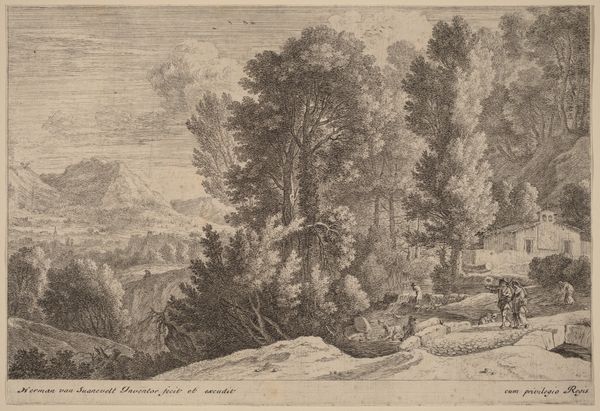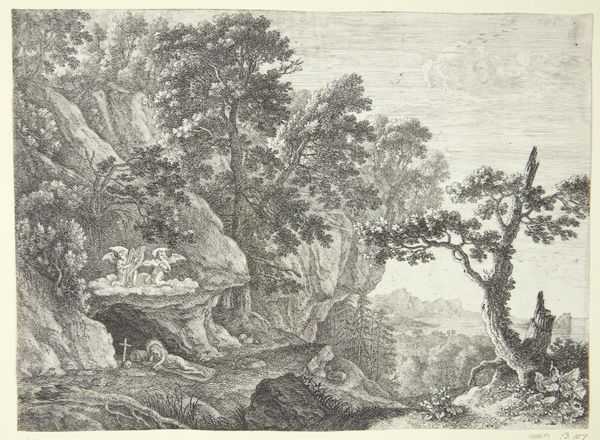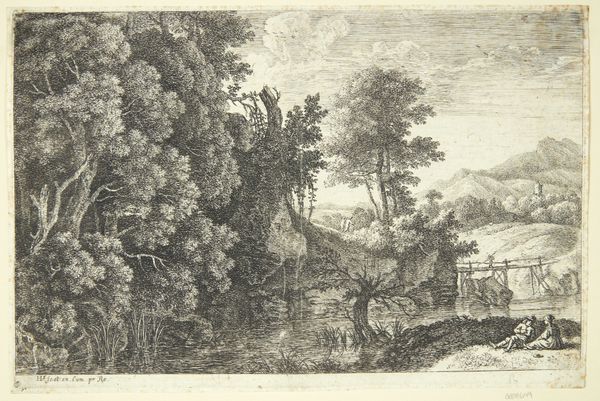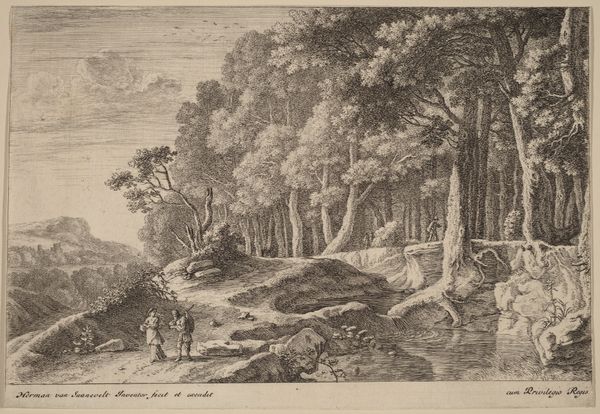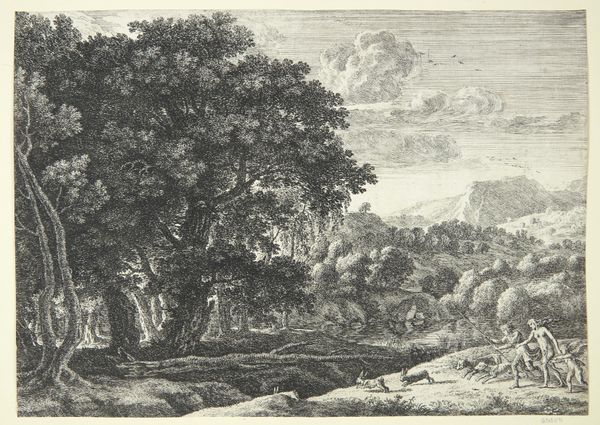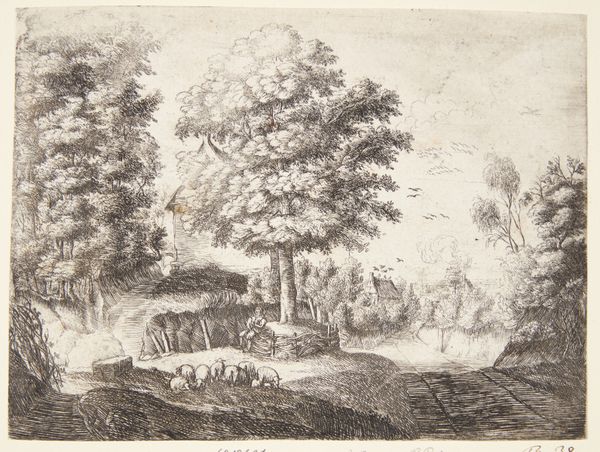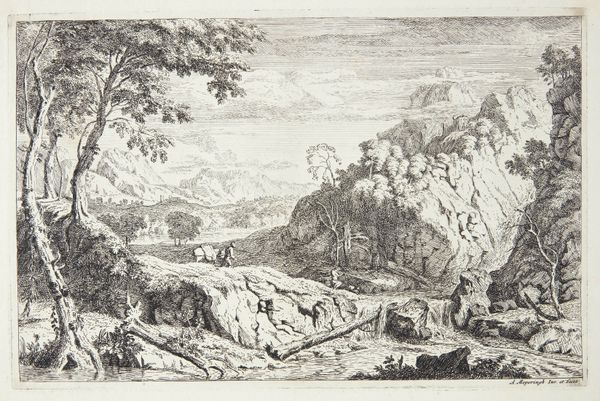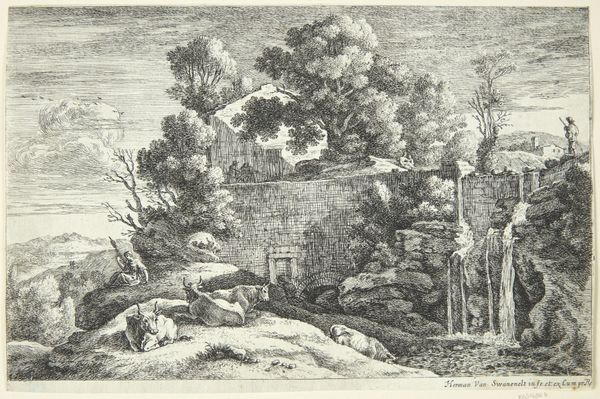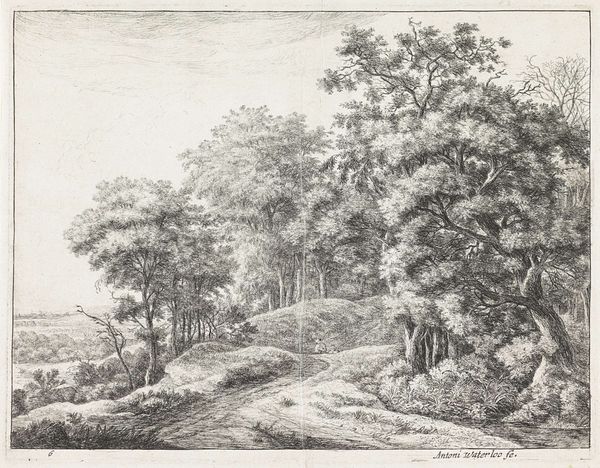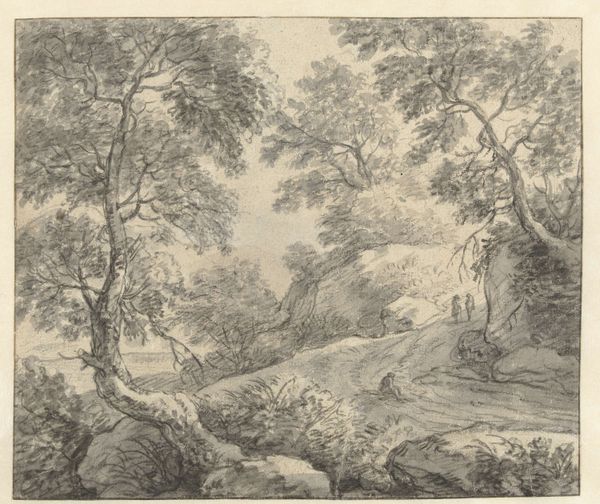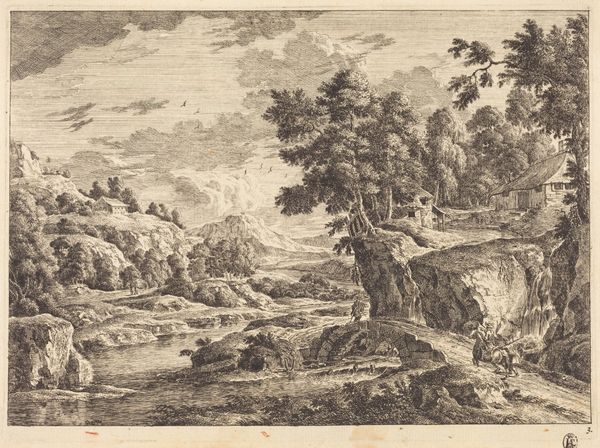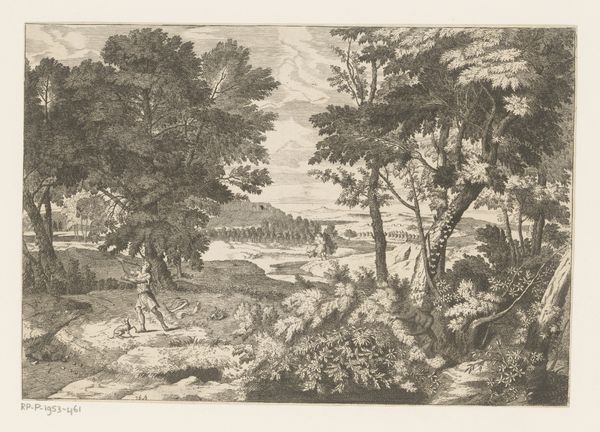
print, etching
#
baroque
#
dutch-golden-age
# print
#
etching
#
landscape
#
figuration
#
line
#
realism
Dimensions: 189 mm (height) x 279 mm (width) (bladmaal)
Herman van Swanevelt made this print, Landskab med vaskekoner, using etching, a printmaking technique that relies on the corrosive action of acid. The artist would have coated a metal plate with a waxy ground, then scratched an image into it with a needle, exposing the metal. The plate was then immersed in acid, which bit into the lines. The longer the plate stayed in the acid, the deeper the lines became, allowing for a richer impression. Multiple dips could achieve tonal variation. This etching depicts washerwomen at work in a lush, idealized landscape, with the labour of these women in the foreground. The etching technique allows for fine detail, essential in capturing the textures of nature and the fabric of the women's clothing. It also allowed for multiples, enabling these scenes of pastoral life, with the working class ever present, to circulate widely. The choice of etching—a relatively accessible printmaking method—democratized art production and consumption. Ultimately, by understanding its material and social context, we can move beyond simply admiring the artist's skill and appreciate how the work reflects its time.
Comments
No comments
Be the first to comment and join the conversation on the ultimate creative platform.
